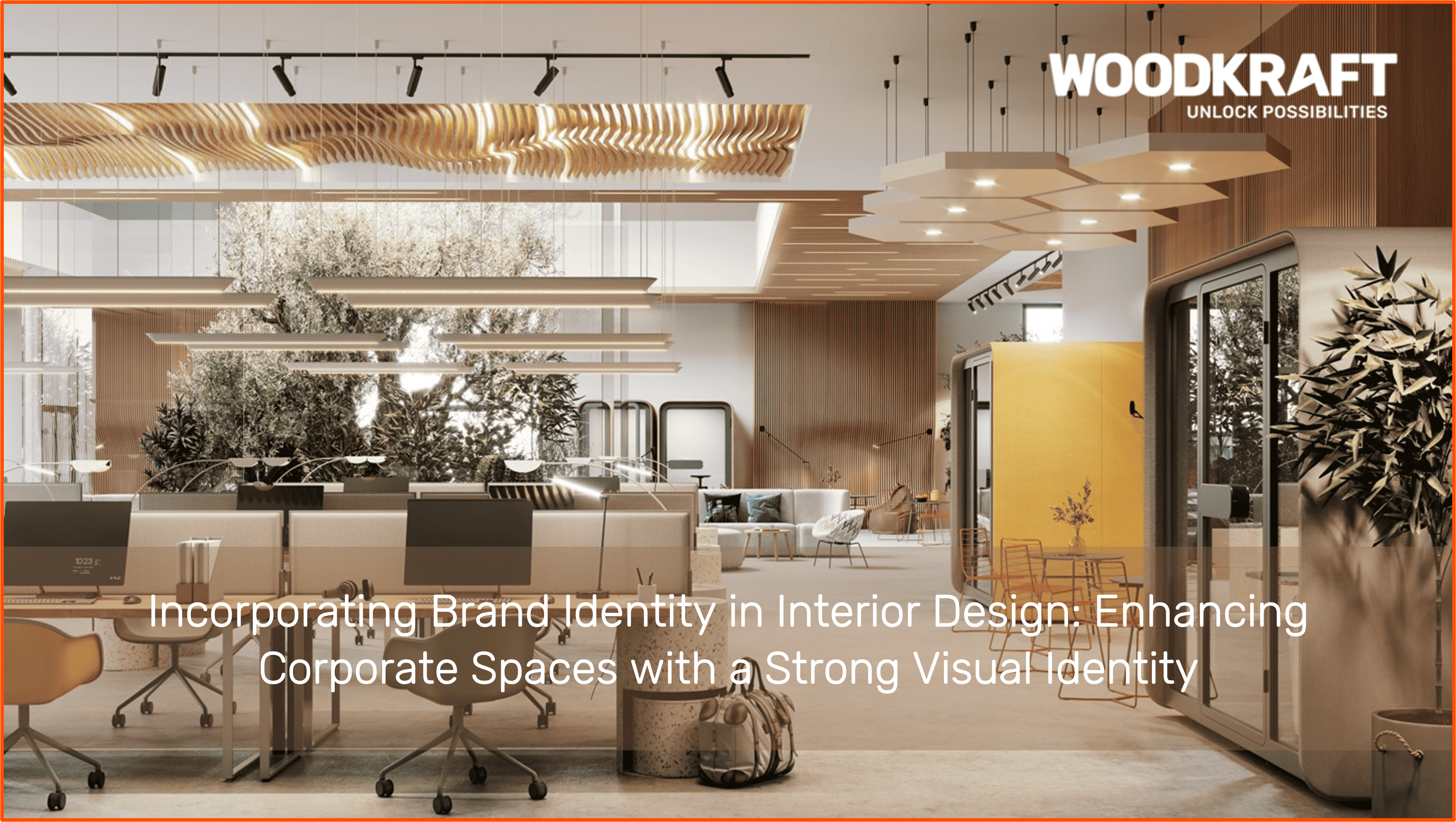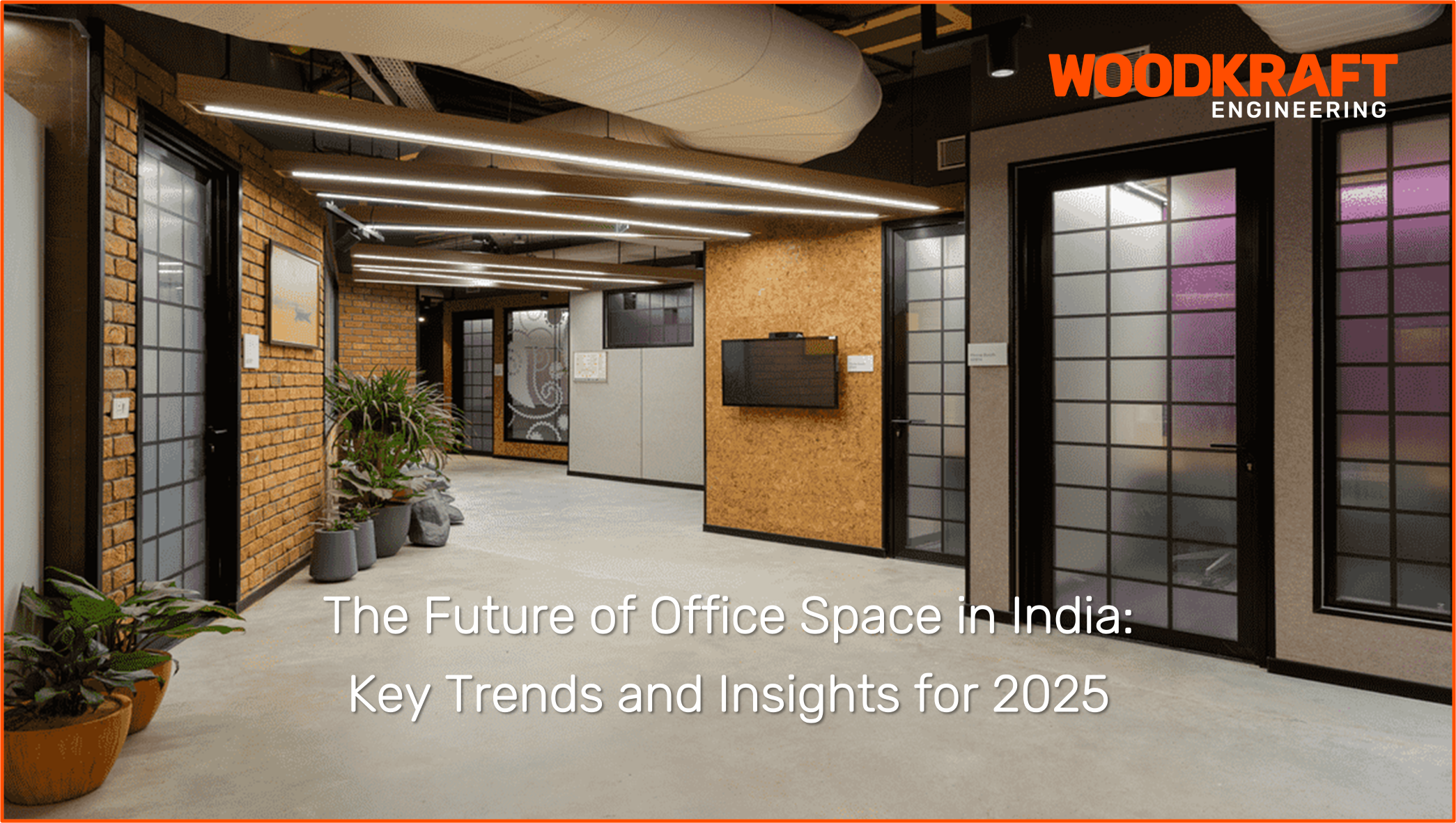DESIGN & BUILD
Incorporating Brand Identity in Interior Design: Enhancing Corporate Spaces with a Strong Visual Identity
November, 2023
In today's dynamic business arena, crafting a strong brand identity is paramount for connecting with the audience. Woodkraft, a leader in corporate interior solutions, understands the pivotal role of brand identity. This article, part of the Woodkraft Knowledge Series on Design And Build, delves into the ways corporate interior design can be a canvas for expressing and enhancing a brand's essence.
#WoodkraftKnowledgeSeries #DesignandBuild #CreativeConstruction #EfficientDesign #ProjectManagement #InnovationInConstruction #ExceptionalOutcomes #ConstructionExcellence #BrandIdentity #InteriorDesign
Color Psychology and Brand Colors:
Woodkraft pioneers the integration of brand colors into corporate interiors, leveraging color psychology to create a visual narrative. From accent walls to furniture, these carefully chosen hues foster brand recognition among employees and visitors, enhancing the overall workspace experience.
#WoodkraftKnowledgeSeries #DesignandBuild #CreativeConstruction #EfficientDesign #ProjectManagement #InnovationInConstruction #ExceptionalOutcomes #ConstructionExcellence #BrandIdentity #InteriorDesign
Logo Integration:
The logo, a cornerstone of brand identity, finds a seamless home within Woodkraft's interior designs. Placed strategically on walls, glass partitions, or custom elements, it becomes an integral part of the overall brand experience within the corporate space.
#WoodkraftKnowledgeSeries #DesignandBuild #CreativeConstruction #EfficientDesign #ProjectManagement #InnovationInConstruction #ExceptionalOutcomes #ConstructionExcellence #BrandIdentity #InteriorDesign
Consistent Visual Language:
Consistency is the hallmark of Woodkraft's approach. Corporate interior designs align with the brand's visual language, encompassing typography, graphic elements, and imagery. This unified design creates a cohesive brand experience, fostering a strong connection with everyone who interacts with the space.
#WoodkraftKnowledgeSeries #DesignandBuild #CreativeConstruction #EfficientDesign #ProjectManagement #InnovationInConstruction #ExceptionalOutcomes #ConstructionExcellence #BrandIdentity #InteriorDesign
Material Selection:
Woodkraft, sensitive to diverse brand values, tailors material choices accordingly. Whether emphasizing sustainability or modernity, the choice of materials reflects the brand's personality, contributing to the overall aesthetic appeal of the space.
#WoodkraftKnowledgeSeries #DesignandBuild #CreativeConstruction #EfficientDesign #ProjectManagement #InnovationInConstruction #ExceptionalOutcomes #ConstructionExcellence #BrandIdentity #InteriorDesign
Custom Branding Elements:
Woodkraft elevates corporate interiors by introducing custom-designed elements. From unique furniture pieces to branded wall graphics and lighting fixtures, these elements embody the brand's essence, leaving a lasting impression on employees, clients, and visitors.
#WoodkraftKnowledgeSeries #DesignandBuild #CreativeConstruction #EfficientDesign #ProjectManagement #InnovationInConstruction #ExceptionalOutcomes #ConstructionExcellence #BrandIdentity #InteriorDesign
Conclusion:
Woodkraft's unique approach to incorporating brand identity in corporate interior design transforms workspaces into visually engaging and memorable environments. By seamlessly integrating color psychology, logos, consistent visual language, appropriate materials, and custom branding elements, Woodkraft ensures that each corporate interior is a testament to brand identity. This commitment contributes to employee engagement, brand loyalty, and a sense of pride.
#WoodkraftKnowledgeSeries #DesignandBuild #CreativeConstruction #EfficientDesign #ProjectManagement #InnovationInConstruction #ExceptionalOutcomes #ConstructionExcellence #BrandIdentity #InteriorDesign
In our upcoming article, we will explore the innovative trends shaping the future of corporate interior design. Stay connected with Woodkraft for insights into creating workspaces that stand the test of time.
Follow Woodkraft on LinkedIn for the latest updates and inspiring workspace solutions.
Click: Woodkraft (India) Private Limited | LinkedIn
Next article in the Design And Build Knowledge Series:
Future Trends in Corporate Interior Design: Innovations Shaping the Workspaces of Tomorrow
Previous article in the Design And Build Knowledge Series:
#WoodkraftKnowledgeSeries #DesignandBuild #CreativeConstruction #EfficientDesign #ProjectManagement #InnovationInConstruction #ExceptionalOutcomes #ConstructionExcellence #BrandIdentity #InteriorDesign






